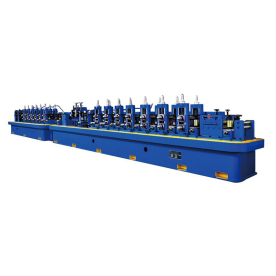In the ever-evolving landscape of industrial technology, efficiency and precision are of utmost importance. One of the standout innovations that have significantly revolutionized thermal processing is automatic induction heating equipment. This cutting-edge technology utilizes electromagnetic induction to produce heat, facilitating various industrial applications including metal hardening, brazing, and plastic processing. In this article, we will delve into the workings of automatic induction heating equipment, its applications, advantages, and the future it holds in streamlining industrial operations.
Understanding Automatic Induction Heating Equipment
Automatic induction heating equipment operates on the principle of electromagnetic induction. When an alternating current flows through a coil, it generates an oscillating magnetic field. This magnetic field induces an electric current in a conductive workpiece placed within the coil. Due to the resistance of the material, this induced current generates heat, allowing for controlled and efficient heating of the object without transferring heat from an external source.

Exploring the Innovations and Advantages of Automatic Induction Heating Equipment in Modern Industrial Processes
What sets automatic induction heating apart is its ability to automatically adjust the settings based on the characteristics of the workpiece and the specific heating requirements. This adaptability means that these systems can handle a wide range of materials, shapes, and sizes, making them versatile tools for industries.
Applications of Automatic Induction Heating Equipment

Exploring the Innovations and Advantages of Automatic Induction Heating Equipment in Modern Industrial Processes
Automatic induction heating equipment has vast applications across various sectors. Here are some of the most common:
1. **Metal Hardening:** One of the primary uses of induction heating is in hardening metals. By rapidly heating a metal to its critical temperature and then quenching it, induction heating can significantly increase hardness and wear resistance.
2. **Brazing and Soldering:** Induction heating is used to join metals together through the brazing process. The equipment ensures that heat is applied precisely to the joint area, optimizing the bonding process and reducing the risk of damage to surrounding materials.
3. **Plastic Processing:** Induction heating technology is also utilized in the heating of plastics before forming or welding processes. This method allows for better control over the heating process, thus enhancing product quality.
4. **Preheating of Components:** In various manufacturing processes, heating components before extensive machining can improve machinability and surface finish. Automatic induction heating equipment can preheat components to required temperatures with precision.
Advantages of Automatic Induction Heating Equipment
The adoption of automatic induction heating equipment brings numerous advantages to industrial operations:
1. **Efficiency:** Induction heating is an incredibly efficient method of heating, often achieving thermal efficiencies of over 90%. This high-level efficiency leads to reduced energy consumption and costs.
2. **Speed:** Induction heating systems can heat materials rapidly, often in seconds. This quick processing not only increases productivity but also minimizes cycle times.
3. **Precision:** The automatic nature of these systems allows for precise control of heating parameters. This is especially beneficial in processes where temperature control is critical, such as in metallurgy and electronics manufacturing.
4. **Uniform Heating:** Induction heating promotes uniform heating throughout the workpiece, reducing the risk of thermal distortion and ensuring consistent quality across all products.
5. **Safety and Cleanliness:** Unlike conventional heating methods that may emit harmful fumes or require flammable fuels, induction heating is cleaner and safer. The absence of an open flame reduces fire hazards and promotes safer working environments.
6. **Reduced Maintenance:** With fewer moving parts and the absence of traditional heating elements, automatic induction heating systems generally require less maintenance, which can further lower operational costs.

Exploring the Innovations and Advantages of Automatic Induction Heating Equipment in Modern Industrial Processes
The Future of Automatic Induction Heating Equipment
The future of automatic induction heating equipment looks promising as industries continue to seek more efficient and sustainable methods for processing materials. With advancements in technology, we expect to see smarter induction heating systems that integrate with Industry 4.0 initiatives, allowing for real-time monitoring and adjustment of heating processes.
Moreover, as the demand for sustainable practices grows, induction heating—which consumes less energy and produces fewer emissions—will likely gain further traction. Research and development in enhancing the capabilities of induction heating systems could lead to new applications and improved performance.
In conclusion, automatic induction heating equipment represents a pivotal advancement in industrial heating technologies. Its efficiency, speed, precision, and versatility are shaping the future of thermal processing across various sectors. As industries strive for greater efficiency and sustainability, the role of this technology will only continue to expand.IF pipe seam annealing machine price comparison
Leave A Comment